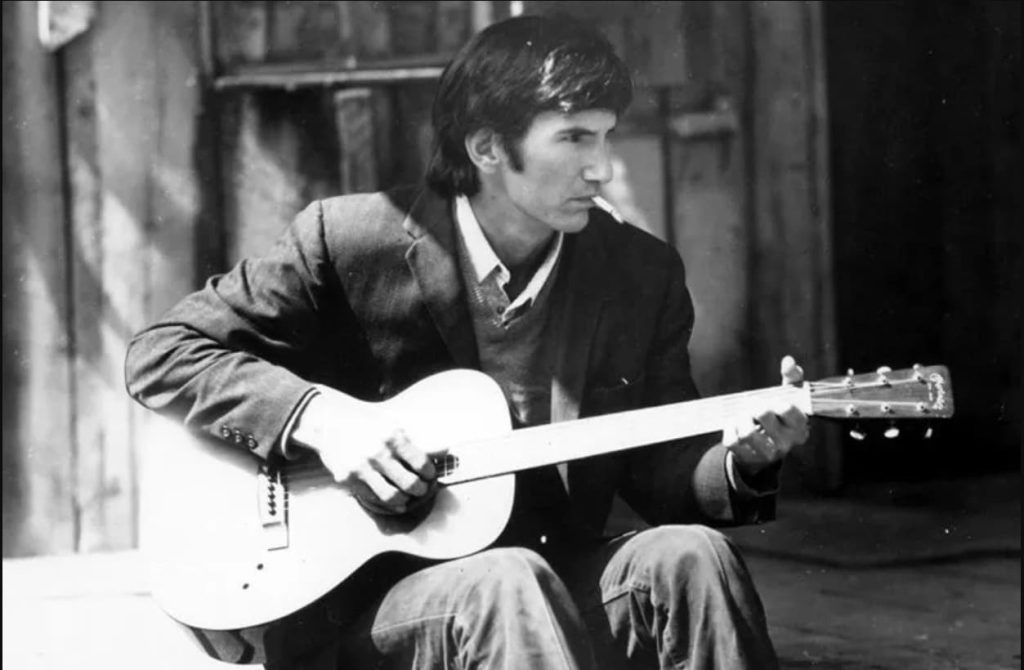
A Rustic Requiem: When Life’s Beauty Wilts, Townes Van Zandt Blooms in “Dead Flowers”
Townes Van Zandt’s “Dead Flowers” is a poignant meditation on fleeting beauty and the inevitable decay that shadows even the most vibrant moments of life. Released in 1972 on his seminal album, “The Late Great Townes Van Zandt,” this track, while not charting on the Billboard Hot 100 at the time, has since become a cornerstone of his enduring legacy, a testament to his raw, unflinching lyrical honesty. It wasn’t a radio hit, and it didn’t ignite the pop charts, but it seeped into the souls of those who listened, a slow burn that continues to resonate decades later.
Van Zandt, a man whose life was a tapestry of profound beauty and equally profound sorrow, poured his heart into every note, every word. “Dead Flowers” is a prime example of his ability to distill complex emotions into simple, yet devastatingly effective imagery. There’s a certain starkness to the song, a feeling of watching something precious slip away, whether it be a relationship, a moment of joy, or perhaps, life itself.
The song’s story is as much about the man as it is about the music. Van Zandt, a chronic wanderer and a master of introspective melancholy, often drew inspiration from his own tumultuous experiences. He lived a life marked by addiction, mental health struggles, and a constant search for something just beyond his grasp. “Dead Flowers” feels like a personal reflection on these themes, a moment of quiet contemplation in the midst of a life lived on the edge. The song isn’t just about the literal image of wilting blossoms; it’s a metaphor for the ephemeral nature of happiness, the way even the most vibrant things can fade and wither.
Think back to those times, those moments when you felt utterly alive, surrounded by beauty and joy. Then, think of how fleeting those moments were, how quickly they seemed to vanish, leaving behind only the memory. That’s the essence of “Dead Flowers”. Van Zandt’s lyrics, delivered in his weathered, haunting voice, paint a vivid picture of this bittersweet reality. He wasn’t afraid to confront the darkness, to acknowledge the pain that comes with living. Instead, he embraced it, transforming it into art that speaks to the universal human experience of loss and the relentless passage of time.
The arrangement of the song, stark and simple, further enhances its emotional impact. Van Zandt’s fingerpicked guitar, often described as delicate and intricate, provides a melancholic backdrop for his lyrics. There are no grand flourishes, no dramatic instrumentation, just the raw, unfiltered sound of a man and his guitar, sharing his deepest thoughts and feelings. It’s a testament to the power of simplicity, a reminder that true artistry lies in honesty and vulnerability.
For those of us who have lived through the ebb and flow of life, who have witnessed the beauty and the decay, “Dead Flowers” offers a moment of solace, a shared understanding of the bittersweet nature of existence. It’s a song that lingers in the mind long after the last note fades, a reminder that even in the face of inevitable loss, there is still beauty to be found, even in the “dead flowers” themselves. It’s a song that, like Van Zandt himself, endures, a timeless testament to the power of raw, unadorned emotion.